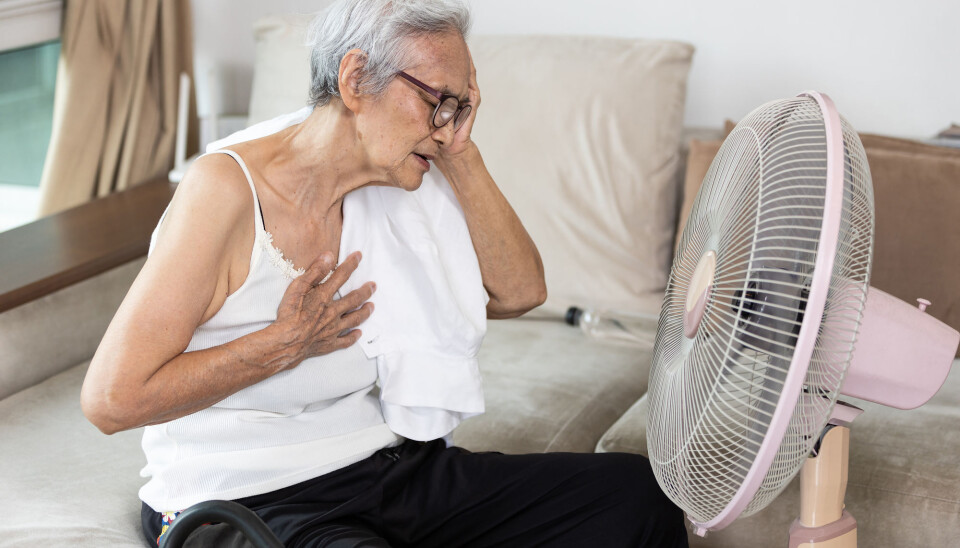
Why do people die during heatwaves?
ASK A RESEARCHER: A lot of people recently died during a heatwave in Canada. But what exactly happens to the body when the temperatures get too hot?
The human body is not created to withstand very high temperatures.
If it gets very hot, the body tries to regulate the heat. But when our body temperature gets too high, these regulating mechanisms stop working.
This is when you can get what many call a heat stroke.
The body then stops sending sufficient amounts of blood and oxygen to central organs. This leads to cells dying in the organs. The blood coagulates and blood clots develop.
In addition, the muscles release harmful enzymes that can, among other things, destroy the kidneys, Anette Hylen Ranhoff explains. She is a professor and specialist of internal medicine and geriatrics at the University of Bergen.
Heat strokes can at worst lead to cramps or a coma. Without treatment, the condition may be lethal.
“I don’t think it’s a very pleasant death”, Ranhoff says.
Unusual heat waves

Never before has western Canada experienced as high temperatures as were recorded at the end of June and beginning of July this year. Temperatures as high as above 49 degrees Celsius were measured in some towns, and 500 deaths are linked to the extreme weather so far according to the Guardian.
When temperatures get that high, there is a danger of people experiencing heat strokes.
Heatwaves like this are unusual in the northern hemisphere, which is why heat strokes are also a fairly rare phenomenon in this part of the world, Ranhoff says.
“People who have heat strokes in Norway get them because they are doing hard physical activities while it’s very hot”, she says.
Don’t go for a run when it’s 30 degrees
The researcher says that in countries like Norway, it is not advisable to go running or do other great efforts when temperatures reach 30 degrees Celsius or more.
“But there are also individual differences here. Some people adapt to heat better than others. It also depends on to what degree you have access to cooling. For instance, it’s very efficient to shower participants at sports tournaments with water when it’s really hot”, she says.
People in Canada may not be so used to the kind of heat the country has experienced recently. This may also have contributed to the number of deaths, Ranhoff suggests.
“The climate in the areas that are hardest hit is quite similar to Norway. When people are not used to this kind of heat, their bodies are also not so used to adapting to high temperatures. This may have contributed to many of the deaths”, she says.
Dehydration is much more common
There are two main reasons for why people die in the heat, Ranhoff says. The first is heat stroke, which is not so common in the Northern hemisphere.
A much more common damage done by heat in Norway, is dehydration. This is when the body loses a lot of water as it evaporates from our bodies. This makes us exhausted and may also lead to a feeling of being too tired to eat or drink. This in turn may harm the kidneys.
Older people are particularly prone to dehydration.
They also have much poorer mechanisms to regulate their body temperature. The same is true for children.
While children have an immature system to regulate heat, older people’s systems are more ‘tired’.
Drink enough water
When we get older, our veins stiffen. This means that an important mechanism for regulating heat – namely expanding the veins – don’t work as well as they perhaps used to.
“Older people also often use medications that are diuretic, meaning they increase the excretion of water from the body. This amplifies the dehydration”, Ranhoff says.
The same goes for people who have cardiovascular diseases or kidney diseases.
Ranhoff encourages everybody to pay attention so that vulnerable groups like children and the elderly get enough to drink and help to cool down when it gets hot during the summer.
Not a big problem in Norway
It has been shown that several people have died during heat waves in Europe and the USA.
So what about a country like Norway?
The summer of 2018 was particularly hot in this country, especially in South-Eastern Norway.
Ranhoff and colleagues studied the deaths in the country during those summer months. They found that just about the same amount of elderly people died during this hot summer as the past ten summers.
“This is probably not only to do with temperatures”, Ranhoff says.
“We have good social systems and a health care system that takes good care of people in this country”.
Translated by: Ida Irene Bergstrøm
———
Read the Norwegian version of this article on forskning.no































